Princess Lexi

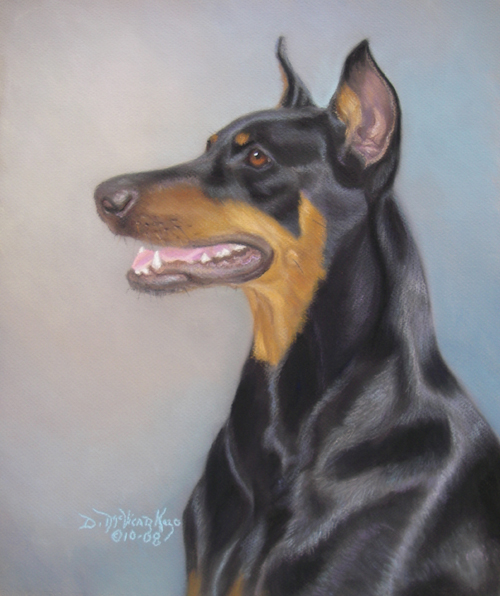
|
Collection of Lauri Hubbard
This lady has the most fantastic coat I've ever seen on any Doberman, and I've seen (and painted) a lot of gorgeous members of this breed. Accurately capturing the sheen on such a healthy hide, especially on a coal-black animal, is extremely tricky. Factors to consider: color of the light source itself, as blue sky is cool and overhead, while reflected light is usually warm, bouncing off nearby surfaces; the color of the hairs and the color of the skin; the anatomy of the animal. Things that stick out, like bones, catch the light, things that sink in— don't. So the artist must learn the bones and muscles, ligaments, tendons, veins and hollows of her subject in order to achieve a likeness. 
The animal portraitist's challenge is to indicate sheen on fur without having a sprayed-on look. Usually, it's best to under-indicate sheen than to copy it slavishly. The shiny area also creates a unique abstract shape that will be more easily duplicated when you are in right-brain mode. Your more "logical" left brain won't have a "name" for the shape, and will get annoyed and let the more "flowing" right brain take over. Go with the flow. But be careful to not create too odd or distracting of a shape, even if it's totally accurate! (Speaking from experience here.) 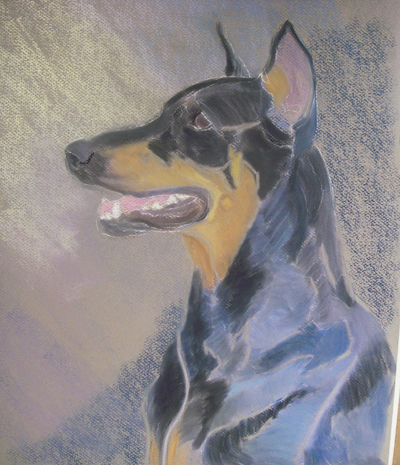 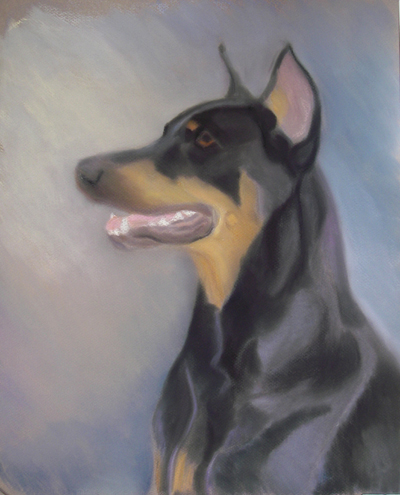
I try to hold off painting the eyes until I'm positive they're in the right place. Eyes will draw our attention; put them in too soon and they will distract us. It becomes harder to correct errors of proportion and placement, if you fall in love with that beautiful eye. I've indulged myself more than once, bringing an eye to completion and then eventually realizing I had to wipe it out completely and repaint it a millimeter away.  
Once I can really begin the eyes, though, it feels great! Placement of the pupil indicates so much of the expression of the subject; this is noticeable with even the simplest "smiley face." The shadow cast into the eye gives the orb depth while also helping to describe the structure of the eye socket. The catchlight, or reflection on the surface of the eye, will give life to the portrait as if a switch has been flipped. Just have to make sure it's very carefully placed. 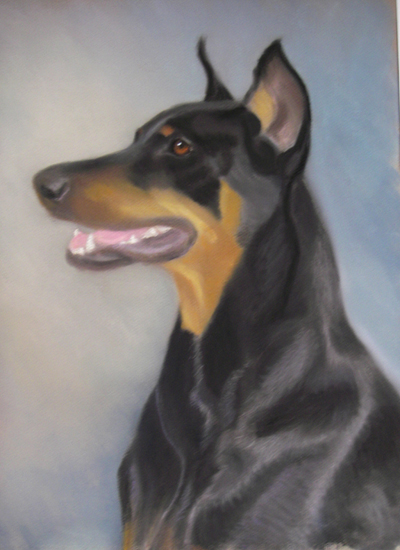 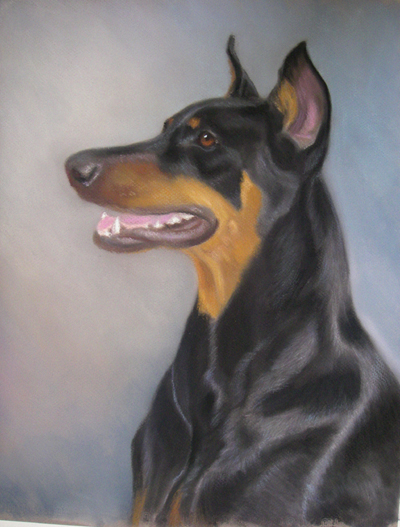
Anything you can do to get a fresh eye to check your painting for problems is useful: a mirror, turning the painting upside down, placing it where you will come upon it unexpectedly are all good tools. I find the least useful thing to do is ask someone what they think. Invariably, they will leap on the spot you know needs the most work! 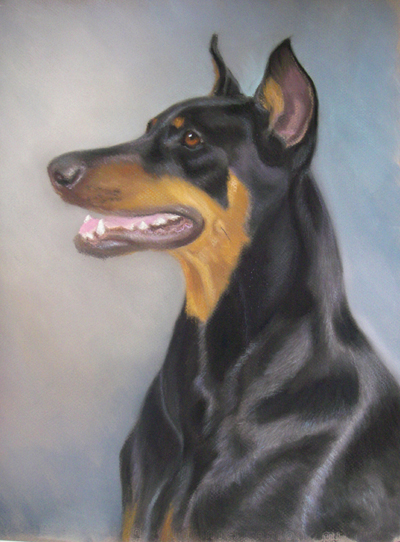
Lexi was a great favorite of my late husband, world-famous animal trainer, ethologist and "Dog Whisperer" Dr. Tom Kazo. His nickname for her was "Lexus" and she worshipped him and obeyed his every whim. Well, so did any dog he worked with. That man had a unique gift with dogs and any other animal. One of his greatest compliments was when a dog had "pizzazz" and Lexi, he often declared, had that quality in spades! I was very complimented and deeply moved when her owners commissioned me to portray her last year. I am sure Tom was smiling down on all of us the day I delivered her finished portrait! |


Okefenokee Suite Giclées Available |
Botanicals Giclées Available |
Teapot Conversations Giclées Available |
Shell Fragments Giclées Available |
Line Art Notecards and Prints Available |
Water Giclées Available |
Dog Portraits Past Commissions |
Horses Past Commissions |
More Animals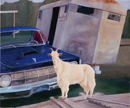 Giclées Available |
Donna's Ark (Whimsical Animals) 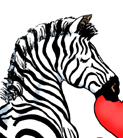 Many Products Available |
| Shelter Animal Portrait Project  Notecards and Prints Available |
Quartets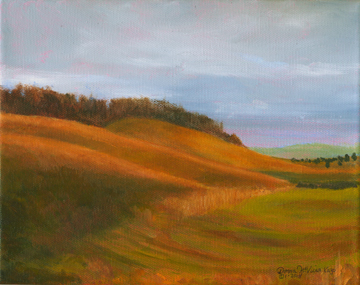 Originals Available |
Photo Contest Submissions and Results |
Miscellaneous Past Commissions |
Confluence Past Issues |
Home - About Donna - Contact - Blog - How to Order - Artwork Index - Links
This site and its contents Copyright © 2010 Donna M. Kazo.
Proud to be hosted by Green Gator; powered by clean, sustainable wind energy.



